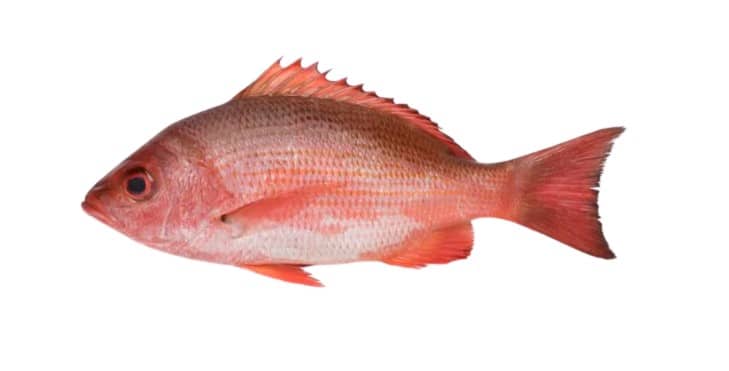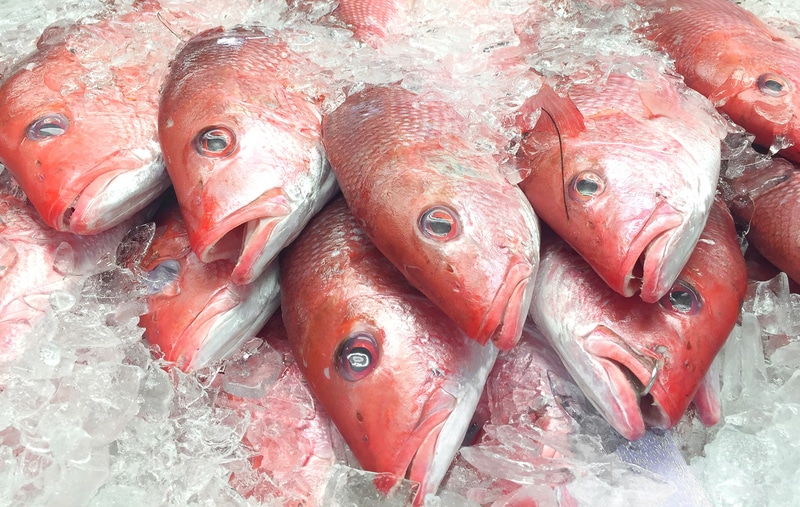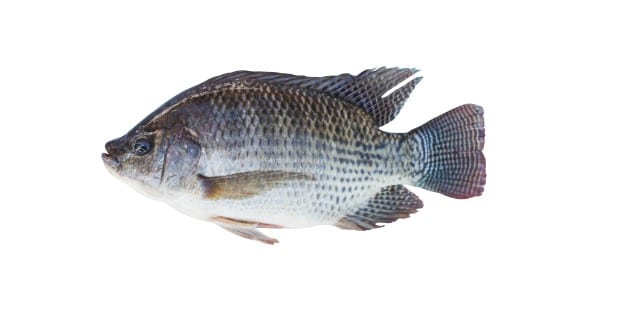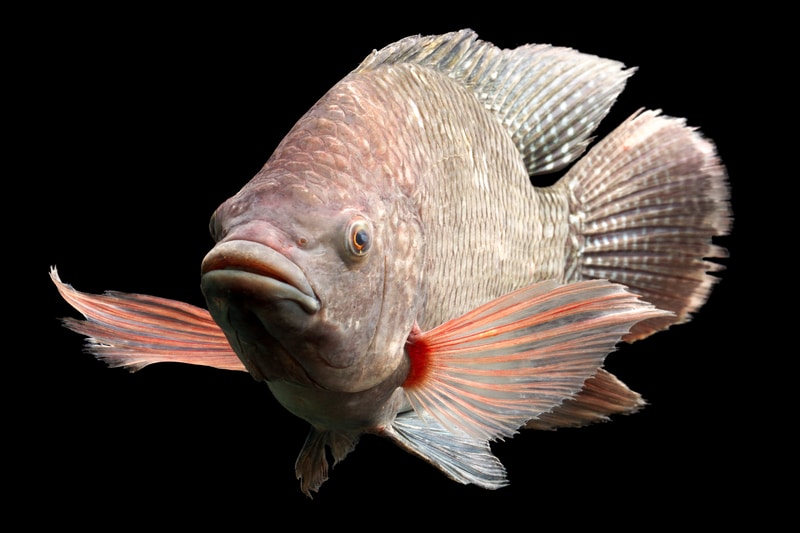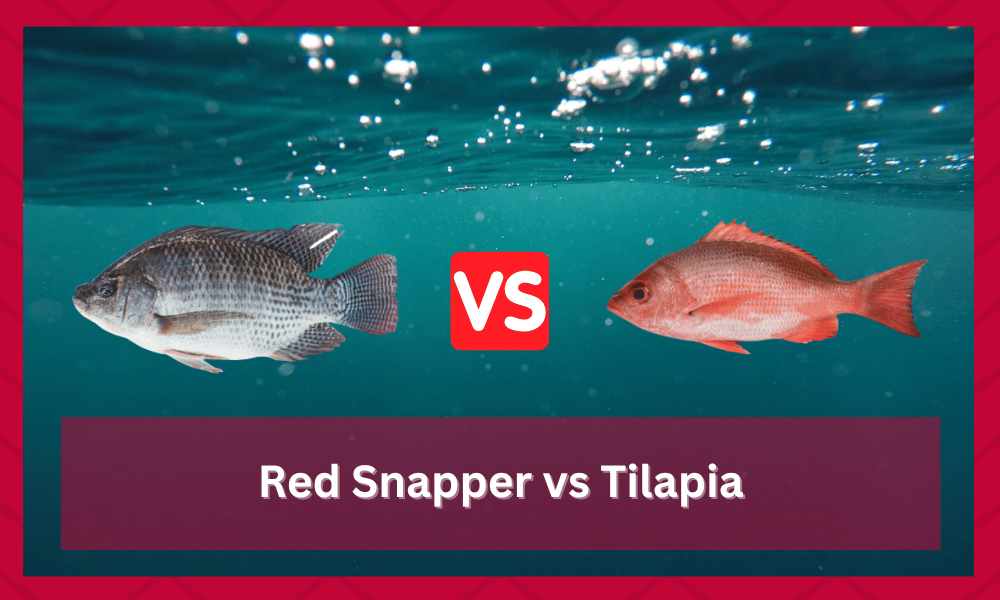
People often visit restaurants to eat fish. These can be a great way of adding protein to your diet. Though you should note that there are tons of different varieties that people can choose from.
This is why it can be important that you understand how these fish are different from each other.
Backed by heavy seasoning to mask the taste, it is pretty standard for some restaurants to replace Red Snapper with Tilapia.
On average, Red Snapper is substantially more expensive than Tilapia, and restaurants save their cost by switching the meat.
So, even if a particular dish seems to claim to have Red Snapper, it is likely that you will be eating Tilapia instead.
With that said, here we will cover some fundamental aspects of Red Snapper vs Tilapia to better understand the dishes.
However, once the dish is cooked, it can be impossible to differentiate between the different types. This is mainly because the varieties are very similar to each other.
You can usually distinguish between these fishes by comparing them side-by-side, but this only works while you still have fillets.
Red Snapper vs Tilapia Comparison
| Type Of Fish | Red Snapper Fish | Tilapia Fish |
| Calories In 3 Ounces | 109 Calories | 109 Calories |
| Fat In 3 Ounces | 1.5 Grams Of Fat | 2.3 Grams Of Fat |
| Protein In 3 Ounces | 22.4 Grams Of Protein | 22.2 Grams Of Protein |
| Cholesterol In 3 Ounces | 40 Milligrams Of Cholesterol | 48 Milligrams Of Cholesterol |
| Vitamin Content | More Vitamin Rich | Less Vitamin Rich |
Red Snapper
The most significant difference between a Red Snapper and Tilapia is that Red Snapper is caught in the open water by fishermen. On the other hand, you will often notice Tilapia being farmed from different fish farms across the world.
Most of these farms have an unsanitary environment that affects the taste and nutritional content of the fish. So, it is always better to use a Red Snapper even if you have to pay more money for it.
Not only will Red Snapper provide you with more benefits, but it is also easier on your body.
If you’re into fitness or like to maintain a balanced diet, then Red Snapper is the safest option for you.
This is because, with Red Snapper, you don’t have to worry about fish from contaminated water introducing toxins into your body.
With that said, looking at the physical feature, the first difference you will notice will be between the size of a Red Snapper and Tilapia.
On average, red snapper is almost twice as large as a Tilapia and maintains a similar shape. In addition to that, the color variance between the two fish is quite apparent.
A red snapper brings different shades of pinkish red to the table, while Tilapia maintains the same greenish-dark color. Aside from that, the taste of Red Snapper and Tilapia is quite similar, with a mild and sweet flavor.
However, the flaky texture of Tilapia might help you differentiate Red Snapper meat from Tilapia meat. Finding the difference between two fish once they are cooked is quite tricky even if you are an expert.
Red Snapper is also richer in calories and is cookable in a variety of different ways. In all ways, it is superior to Tilapia, and you should expand your budget if you want premium-quality meat.
These fish are one of the most sought varieties because of their characteristics but there are some additional things that should be noted about them. Red snapper can usually grow fast when comparing them with other similar fish.
In most cases, people will notice that the variety starts getting larger and increase their size within the first 10 years of their lives.
The size can go up to 30 inches which makes these medium-sized varieties. After this age, the growth rate starts to drop, and the fish will not grow as fast.
Red snapper is also sometimes considered to be a little tricky to catch. When it comes to this, people should always check the time they are fishing.
This is essential as the variety only comes out while there is still daylight. It is best that you try fishing for it in the early mornings.
This helps in ensuring that you can easily catch these fish without running into any issues. If you are fishing while there are tons of other fishermen around, then this can cause additional problems.
This is because experts might catch the variety before you even get the chance to attract it.
Other than this, the equipment being used also plays a huge role so make sure that you are careful. Having a durable rod and line is usually enough to raise your chances of success.
Though your skill also plays a huge role when trying to catch fishes.
Tilapia
Compared to Red Snapper, Tilapia has quite a bad reputation because of its most supply comes from fish farms. Farm-raised Tilapia doesn’t only bring contaminants to the table, but they also have a foul taste.
This is mostly from the chemicals used to grow the varieties on farms.
So, even if you notice Tilapia on sale, it is best to stay away from this meat and look towards other alternatives.
Luckily, the taste of Tilapia and Red Snapper is not that different, and if you cook them perfectly, you won’t be able to notice any difference in taste.
You can easily substitute Red Snapper in place of Tilapia to give your recipe more flavor.
Aside from all the flavor improvements, red snapper also has more nutrition. The meat is denser and brings more calories to the table.
So, if you’re skinny and want to put on some weight sustainably, then Red Snapper is the way to go.
With that said, the omega-six to omega-three ratio in Red Snapper is also better as compared to Tilapia. Tilapia is not a good option for you if you’re into fitness.
This fish can cause several inflammatory issues. This is especially true for people suffering from medical conditions.
So, you should avoid adding Tilapia to your diet until you find a trusted supplier that promises you a wild-caught Tilapia.
You will have to pay more for a wild-caught Tilapia, but at least it will provide you will all the benefits that you expect from this fish. Furthermore, your health will suffer no consequences from all the contaminants on the farm.
So, always buy fish from a reliable supplier that sources his stock from fishers. That way, you will keep getting healthier while eating Tilapia twice every week.
Aside from this, you can also fish for Tilapia yourself. That’s because it is pretty easy for even beginners to catch this fish.
When it comes to this, it is important that you understand some things. The Tilapia you are catching should be checked carefully as there is a high chance that you might accidentally catch farm-bred varieties.
As mentioned above, these have a lot of contaminants so it’s best to avoid them.
The best way to distinguish a wild tilapia from a farm-bred one is by observing the fins on the variety. In most cases, people will notice that the fins of a wild tilapia are rounder and smoother.
This is because these fish roam around in streams of water without any issues.
However, when it comes to tilapia that are raised on farms, people should note that they have damaged fins.
These can be easily noticed and another thing that you will see is that the fins are rough in comparison. This makes it easier for people to tell the fish apart and also allows them to avoid issues.
With that being said, people going through the comparison should be able to understand how these varieties are different from each other.
If you are still having trouble, then the chart provided should help you in figuring out how the nutritional values of these varieties vary.
Other than this, the taste is very similar after these fish have been cooked. You can try cooking fillets from both of these varieties and then check If you can tell any differences between them.

